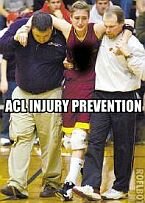AVOID HEAT ILLNESS ON THE GOLF COURSE: CARE AND PREVENTION
This summer has been a hot one and I have heard many stories of people suffering from the heat on the golf course. Both heat exposure and dehydration will diminish a golfers ability to play; however, even if a golfer is well hydrated, hot weather alone can cause heat illness. When the rate of heat production by the body exceeds the rate of heat dissipation the thermoregulatory system may become overloaded and cause heat cramps, heat exhaustion, or heat stroke.Heat cramps typically begin as muscle twitching and can progress to localized contractions of the muscles of the legs, arms, or abdomen. Treatment includes cessation of golf for the day, moving to a cool, shaded area, drinking cold water, and using gentle massage and stretching of the cramped area. Before returning to the links, the cramp and the pain should be completely gone.
Heat exhaustion is a form of shock due to the inability of the body to meet demands of blood flow to skeletal muscle (exercise) and skin (heat dissipation). Signs and symptoms are weakness, fatigue, profuse sweating, dizziness, fainting, headache, nausea, diarrhea, loss of mental clarity, increased body temperature, increased heart rate, decreased blood pressure, muscle cramps, and loss of coordination.? Treatment includes cessation of golf for the day; moving to cool, shaded area; monitoring temperature, pulse, and blood pressure; body cooling with cold water or ice; slow rehydration with cold water or sports drink per the persons tolerance. If symptoms worsen, call 911. Do not try to golf for at least the remainder of the same day. Recovery is usually complete within 12 48 hours.
Heat stroke is a medical emergency requiring rapid diagnosis and treatment. Signs and symptoms fall into three groups: decline of mental acuity (confusion, forgets details, cannot follow progress of game/race); bizarre behavior (combativeness, loss of temper, blank stare); physical decline (unsteadiness, loss of coordination, nausea/vomiting/diarrhea, unconsciousness, seizure, body temperature >104° F, rapid/shallow breathing, rapid/weak pulse, and decreased blood pressure). 911 must be called IMMEDIATELY. The person must be placed in a cold (ice) bath as quickly as possible (and removed once temperature drops below 102° F). Have the person sip cold water or sports drink until EMS arrives. A health care profession should determine a return to activity date. Heat stroke can cause permanent heat intolerance.
Factors that can cause increased susceptibility to heat illness are: prior history of heat difficulties, poor conditioning and acclimatization, obesity, sun burn, heart disease, skin disease, fever, inappropriate clothing, certain medications (beta-blockers, cyclic antidepressants, diuretics, antihistamines, and antibiotics), cystic fibrosis, mental retardation, use of ephedra or other stimulant supplement, pushing too hard.
Dehydration - loss of body fluid - reduces the bodys capacity for heat loss. If you are thirsty, you are about 2% dehydrated. This can cause loss of energy and impaired performance. A 5% loss can cause gastrointestinal problems (nausea, vomiting) and muscle cramps. At 7% coordination loss and hallucinations may occur and a 10% loss may result in circulatory collapse and death. High sweat rates can cause large losses that worsen dehydration.
Here are some guidelines to optimize your performance and prevent hyperthermia and dehydration:
1. Acclimate to the heat over 10 14 days. Do not play all 18 holes if you have not had a chance to acclimate to the heat!
2. Do not golf if the heat index is over 100 and the air quality index is in the red (unhealthy). If you must play, start your round very early in the morning.
3. Weigh yourself before and after you play. Drink 16 ounces of cold fluid for each pound lost. You cannot rehydrate by guzzling, so drink throughout the remainder of the day. This is especially important when golfing on a daily basis in the hot weather.
4. Look at the brim of a cap for that white ring to see if you are a salty sweater. You may need sodium tablets during your round of golf. Eat salty food after your round. If you have hypertension, check with your physician.
5. Prehydrate by drinking 16 ounces about 30 minutes before you play. Adjust this as necessary.
6. If your urine is darker than a chardonnay wine color, you are dehydrated.
7. If your heart rate remains elevated after you play, cool yourself both internally (drink cold water) and externally (ice massage or bath).
8. After you play, cool yourself immediately. Get out of the sun and into a cool environment. At the course, bring a cooler with an ice pack and rub the ice pack over your head, arms, and legs for a few minutes. A great product is called Ice-Up, an ice cup with in its own cooler that stays frozen for up to 10 hours. At home, take a cold shower or bath.
9. Wear light colored, lightweight, moisture wicking clothing and a similar hat.
10. Wear sunscreen with an SPF of at least 30.
|
The Ultimate Nutritional Lie Detector Test LEARN MORE 
|
Kettlebell Rehab

Click Here
To See How Kettlebells will transform your body!
Vortex Rehab

Click Here
To See How This
Revolutionary Machine
Can Help You!
Partner / Support

Loans up to 3 months - fast cash advances for up to 90 days and up to $5,000!


















